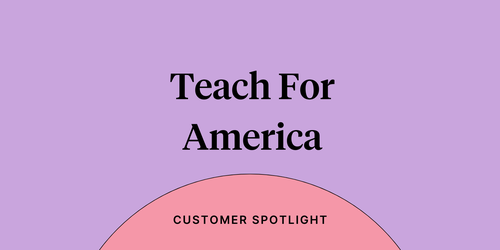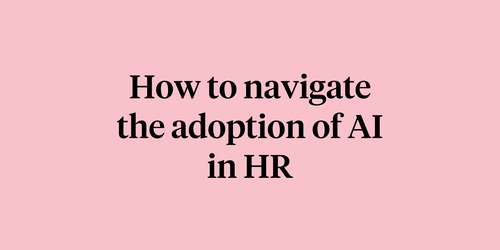
Employee personas: The key to understanding your workforce

For a long time, businesses have used user personas to learn how to better serve and market to their customers. While customer personas have generally been reserved for departments like marketing, customer service, and product design, there’s no reason HR can’t benefit from them as well. Just swap “customers” for employees and think of your “products” as company culture, benefits, and the employee experience — and user personas fit right into the HR space!
In this article, we share the benefits of employee personas, how to create your own, and an in-depth look at why your business could benefit from them.
What is an employee persona?
An employee persona is a profile of a specific employee segment that details their characteristics, attitudes, wants, and needs. HR teams can use these profiles to better personalize and tailor their initiatives to best suit their employees.
For example, if your company is looking to roll out a new learning and development initiative, you might want to consider what two of your employee personas would want out of an L&D program. A worker with just a few levels of experience – let’s call her Entry-level Erica – and a manager with 10 to 20 years of experience – Senior Manager Sam – will want to develop very different skills.
Erica might benefit from more general classes on topics like design thinking, leading effective meetings, and giving and receiving feedback, while Sam might be interested in more technical skill development or honing their people management, strategy, and change management skills. Having a robust understanding of these two audience segments allows you to better cater your programs to your employees’ needs and ensure your team invests in high-impact areas of the business that drive the needle on employee engagement.
These personas don’t only have to be employees. Your HR team might even find it helpful to create personas for your key stakeholders or cross-functional partners, like finance, the CEO, or your Board of Directors. These personas can remind you to consider what these stakeholders care most about, for example, finance might be more interested in budget implications and ROI, while a CEO might whether this new policy or initiative sets you apart as a more competitive employer. Using these lenses, you can more effectively tailor your pitch or presentation to their needs, helping your win over their support today and tomorrow.
How do you create employee personas?
Employee personas are constructed using data and insights from your workforce. Odds are, if you’ve been with your current company for a while, you have a rough idea of some of your personas already in your head. However, you should still make an effort to write them down so you or other members of your team can easily reference them in the future.
If you’re looking to create and document employee personas at your organization, we recommend you follow this step-by-step process:
1.) Reach out and talk to colleagues with persona-building experience
Before you dive into researching and documenting your employee personas, take time to speak with people in your organization who have experience building or working with personas. User personas are used in many different areas of the business, so it should be fairly easy to locate someone who can help by sharing what questions you should ask during your research, what format you should explore using, and how to get the most out of these profiles.
2.) Talk to your employees
User personas are not effective when they are built on assumptions. To really understand the unique wants, needs, and pain points of each of your segments, you need to talk directly to the people you’re building for: your employees. Again, some of this information might already be in your head from casual conversations you’ve had with your employees or from engagement survey feedback. Even still, it never hurts to validate your assumptions by going directly to the source.
Employee focus groups are one efficient way to bring like-minded employees together, ask them questions, hear their responses first-hand, and have them build off each other’s ideas and experiences. This can help you develop a concrete understanding of what makes them tick, as well as how your HR team can best support them.
3.) Determine your defining characteristics
Next, you’ll need to determine the criteria you’ll use to segment your personas. While there is a multitude of dimensions you can look at, the most common one is often job-level (individual contributor, manager, senior leader, and executive). That said, you can brainstorm and select other dimensions with your team, such as underrepresented groups, remote workers, part-time workers, or employees in specific office locations.
Just know: there is such a thing as too many personas, so try to limit your team to roughly 3 to 5 personas to get the most out of them.
4.) Build and document your personas
Now, it’s time to put pen to paper (or more realistically, open up Google Docs) and document your employee personas. As far as format goes, you’re free to pick whatever form works best for your business, but most companies choose to include:
- A name — we recommend fun, alliterative ones like “Mid-level Manager Maggie” or “Individual Contributor Isaac”
- A stock photo headshot to help personify the persona
- Key demographic information, like employee age, tenure, job title, seniority, department, location, commute time, family size, ambitions, education, work history, etc.
- Goals and motivations
- Key frustrations
- A quote that sums up their profile
Once you’ve collected and incorporated your team’s feedback, be sure to store your finalized employee personas somewhere everyone on your team can easily find and access them. That way, everyone in your department can reference your personas as they build new or update existing HR programs and policies.
5.) Test and iterate
Your employee personas might not be perfect right off the bat, so you’ll probably have to play around with them a bit to get them just right.
Organizational or socio-economic changes could impact your personas, too. For example, while most employees might not have been dealing with mental health issues two years ago, the global pandemic became a major source of stress and anxiety for most individuals. If a company was using employee personas they would have benefited from updating their personas to reflect new employee pain points and needs that arose during COVID-19. Using that information, a business could implement employee assistance programs, free counseling, change management training, work from home stipends, flexible scheduling, or wellbeing benefits to help their employees adjust to the new demands of the pandemic.
Why should your company use employee personas?
Different employees have different needs. Personas allow you to keep these unique needs top of mind, so you can easily understand what HR initiatives you need to build, why, and how to communicate them to your different audiences effectively.
Let’s walk through another example of how an HR professional can use an employee persona to drive action. Let’s say our persona is Mid-level Manager Maggie.
“Maggie” has been with the company for 3 to 5 years, is loyal to her team, and wants to help her direct reports grow their careers. Come annual performance review time, Maggie wants to invest in her employees’ careers and help them grow within the company. So, how might the organization’s HR team use the Maggie persona to better serve mid-level managers during performance reviews?HR could launch training programs so Maggie can get a refresh on giving and receiving feedback, as well as having difficult conversations. As Maggie will also want to know if she has the budget to promote or give raises to her team of top performers, the HR team might also want to lead an informational session or share resources spelling out each department’s budget and the process for getting promotions approved.
In this example, the Maggie employee persona helped the company’s HR team anticipate the needs of their managers and ensure that each team leader has the right resources and information to have a successful performance review season.
Personas for small and time-crunched teams
If you’re a small team and don’t have the luxury of time to create these personas, don’t worry. In fact, you probably already do this work now, even if you don’t have the documentation to prove it. And if you’ve been with your company for a significant amount of time, odds are you’ve had enough conversations with employees to pull personas together in a less formal way.
After all, if you’re considering the unique needs of your different employees every time you create or update an HR program, you’ve already using employee personas—just without the words on a page. If possible, we still urge you to document these personas over time so you can easily pass on this internal knowledge as your team grows, or if you leave the company. That way, new and existing members of your HR department can reference your employee personas whenever they need, allowing your team to create HR initiatives that cater to and please your entire workforce.

Understand your employees
Make better decisions and drive meaningful change with employee engagement surveys.


